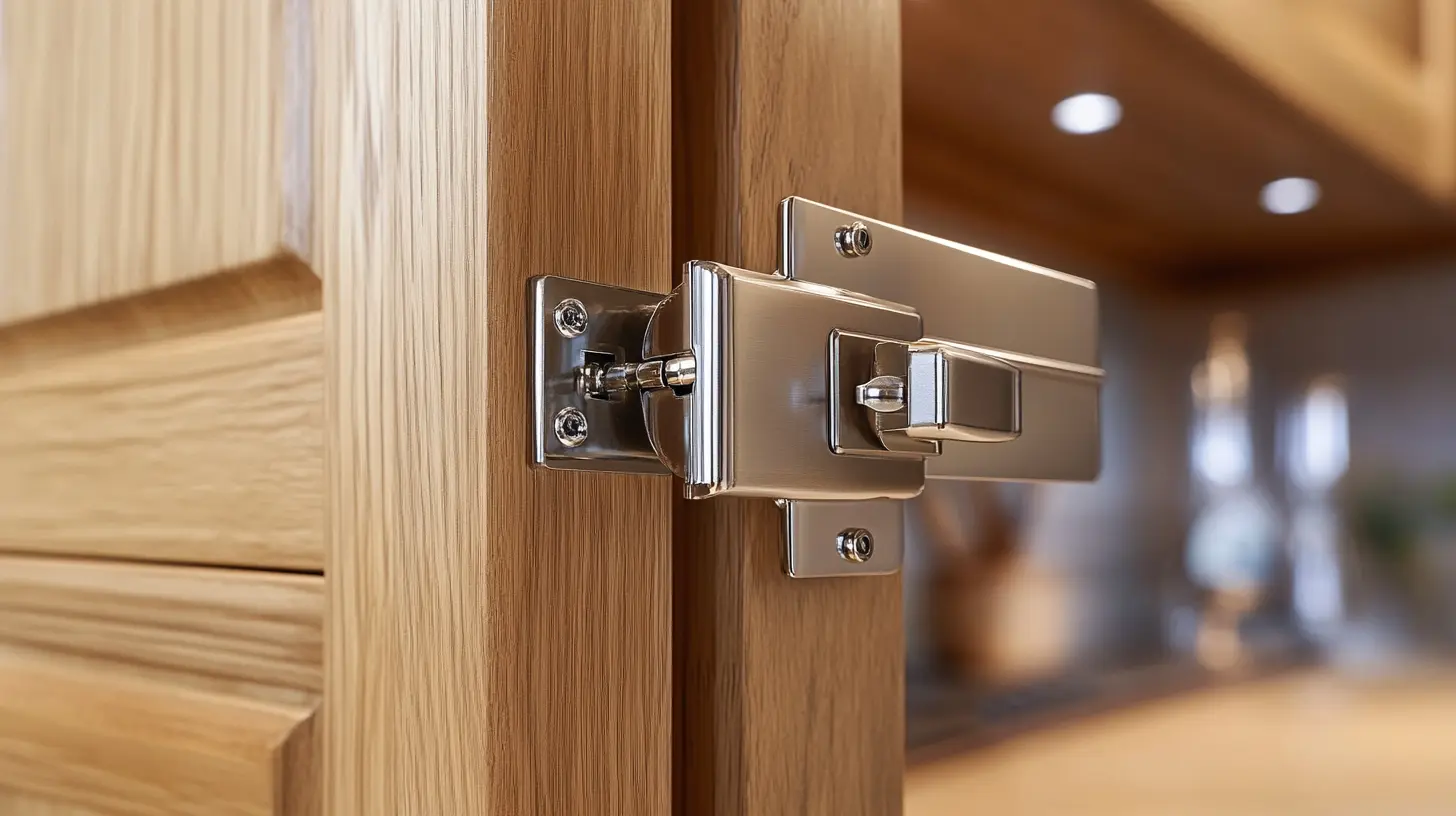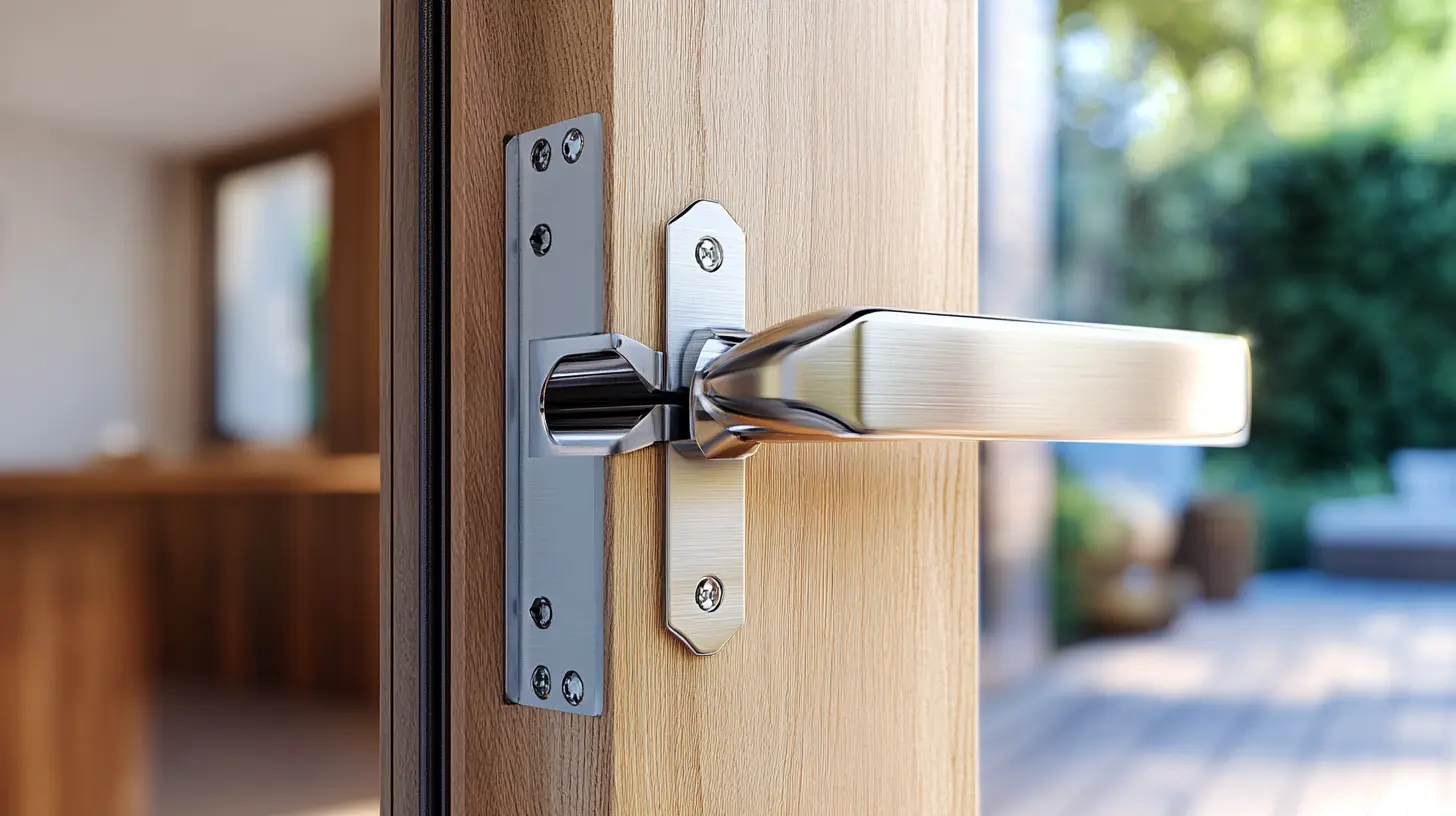Leave Your Message
These are modern-day components and increasingly assertive soft close hinges in a highly competitive furniture and cabinet industry, considering the factors that improve the user experience with quiet and gentle movement of doors and drawers. Grand View Research recently released a report that states the global market for soft-close hinges will grow at a compound annual growth rate (CAGR) of 6.2 percent from 2021 to 2028, establishing the fact that such hardware has an increasing demand among users. This is because there is an impact on durability, safety, and aesthetics of the hinge, and therefore, it becomes a priority for the consumers and manufacturers.
Guangdong Canhuang Precision Hardware Co., Ltd. is a dedicated manufacturer who has established a two-decade-old reputation in the field of hardware. The company sets parameters and benchmarks in hardware components, including Soft Close Hinges. YOUDO is not only the largest product brand of the company but also well known across the continents, which is beyond five, thanks to its reliable distribution partnerships. With transforming trends towards meeting the customer needs and wants by customer-centric products, it is imperative for global buyers to grasp strong specifications and techniques of installation relative to Soft Close Hinges. The current guide is set to enlighten one in understanding how best to select and install these pieces into the system, thereby meeting the needs of both manufacturers and the consumers in terms of achieving maximum functionality and satisfaction.

Soft-close hinges have dramatically appealed to consumers given their functionalities and special features. One major aspect of the hinge is the ability to stop cabinets and doors from slamming shut, allowing for a gentle and quieter close. This particular function proves to be an asset in homes with children or pets when the hustle and bustle of everyday life causes slamming of doors. It is important for worldwide buyers to understand these relevant features in order to enrich their cabinetry or furniture experience. In researching soft-close hinges, specifications should also be taken into consideration. They come in a variety of sizes or materials depending on the kind of cabinetry or the weight of the door. An overriding specification assessment considers the weight capacity each hinge may withstand, as such consideration can very well affect installation and performance. Ease of installation is another attractive feature. Modern soft-close hinges are designed for fast and easy mounting, allowing users to gain those benefits without needing professional help. Performance should not be the only itinerary consideration for buyers; aesthetics should also be considered. Soft-close hinges are available in a host of finishes, so the hinge will blend in nicely with the existing design of your kitchen or furniture. This blending of utility and beauty makes soft-close hinges an attractive addition to any home that satisfies practical needs and aesthetic preference. With a growing trend toward convenience and quality, such knowledge becomes highly important for consumers who wish to invest in soft-close hinge technology.

Soft close hinges have transformed cabinetry design by introducing elegance and practicality in enhancing user experience. The demand for soft close hinges in the global market is projected to grow at a CAGR of 6.5%, from 2021 to 2027, as per a report from the Market Research Future. This trend, rising all over the world, has enlightened consumerism in favor of products that augment aesthetics and practicality.
Soft close hinges are mainly noise-free. Doors of cabinets bang loudly when closed, and in case of busy homes, this can hamper their functioning. The traditional noise automatically gets eliminated through the hydraulic system, which slowens down the door as it approaches the closed position and gently closes it. According to research published in Journal of Interior Design, it has been observed that people nowadays prefer to have a quiet home turning towards greater use of such hinges.
They also reduce overall wear and tear of the cabinetry by not letting it slam resulting in causing damage to the hinge and the structure of the cabinet. Some reports state that soft close technology in cabinetry increases strength by about 25% according to the industry for the benefit of consumers looking for longer investments. The march is nowhere near slowing down on soft close hinges as they continue to rise globally, with buyers increasingly clamoring for quality and longevity in cabinetry solutions.

Soft close hinges are modern cabinets and furniture makers' gorgeous hardware that quietly and gently closes the door or drawer. Buyers try to get educated on the various types of soft close hinges as their products bear some aesthetic and functional improvements from this aspect.
One of these varieties of soft close hinges is an ordinary soft close hinge, which has an automatic slowing down device to reduce the momentum of the door closing to prevent it from slamming. Used mostly in kitchen cabinets and bathroom vanities, it has also another type, the concealed soft close hinge. It is a type of hinge that hides behind the door when closed, creating a nice clean and seamless appearance. Heavy-duty soft close hinges are available and can hold increased weights, making them more efficient for use in commercial applications.
Adjustable soft close hinges allow the user a subjective adjustment of the closing speed and force, allowing installation to meet individual requirements. This adaptation suits almost everything from private homes to public buildings. It not only enables the actual selection of the right hinge for a project but also ensures that the final works meet the desired functionality and aesthetics, leading to higher customer satisfaction.

When soft-close hinges are being selected, it is necessary for global buyers to know the important specs that would enhance the utility of their cabinets. Soft-close hinges prevent slamming doors by means of a smooth and silent closing action. This hardware enhances user experience and adds to the longevity of cabinetry. The hinge type, opening angle, and weight capacity are the basic specifications that one must examine, which will have impacts on the performance of the hinge and its enablement for compatibility with a vault of cabinet designs.
Hinge type could range from concealed to semi-concealed and has an impact on both the installation and leverage an aesthetic appeal. For example, concealed hinges hide away when the cabinet door is shut for a very clean look. The opening angle is a critical aspect again; by convention, soft-close hinges open between 90 and 180 degrees. Getting the angle correct is essential to effectively allow the entry and ventilation of the closed door. The weight capacity should also be considered based on the doors' materials and sizes, as exceeding it would lead to the failure of the hinges and an impeded user experience.
Another aspect to consider is installation. Measurements and alignment during installation determine the mechanism's effective functioning. Manufacturer specifications on the hinges will be useful to ensure that the depth and height of the hinge on the door and cabinet frame installation were correct. Selecting soft-close hinges that not only beautify cabinets but also serve real functions will create a valuable niche for the varying needs of global markets.
Soft close installation hinges are dependent on certain specific steps being carefully adhered to ensure proper operation and long service life. You must gather all the required materials and tools performing the task in advance. Drill, screwdriver, measuring tape, and of course the soft close hinges are on the checklist. Then remove the hinges from the cabinet door and frame; if the cabinet is new, mark placement locations on the door and cabinet.
Drill pilot holes first at your marked positions to prevent wood splitting. Attach the hinges as carefully as you can to the cabinet frame first, keeping them even and holding them fast. Join the door with the hinges once you have finished attaching the hinges to the frame. Adjust the door according to your needs for it to even out all around. It is essential during this procedure to check the soft close mechanism, ensuring it is all working well and smoothly.
Test a few times after the installation to assure you of correct working soft close functionality. For example, by just pushing the door a bit, it should close slowly and silently. You will have to do some fine-tuning on this to get the adjustment of the hinges perfect for closing. Following the above processes will guarantee proper installation of your soft close hinges and ensure that they operate seamlessly and quietly whenever the doors or cabinets are used.
A genuine advancement in these hinges' performance and longevity will come from the understanding of common difficulties experienced with them. The most common complaint is noise during operation. The KCMA survey indicates about 30% of manufacturers report consumer complaints about soft-close hinge noise. The complaints typically refer back to improper hinge installation: either misalignment or too-tight screws causing friction and noise. So proper hinge installation is an important factor in addressing this problem.
Another common complaint involves closing speed and efficiency. According to research from ANSI, closing problems are experienced by 20 percent of users of soft-close hinges, citing wear and tear over time and improper adjustment after installation as possible reasons. Scheduled maintenance and adjustment of hinges can overcome this hurdle. Users should check the hinges from time to time for any damage and ensure that the soft-close mechanism is working freely.
Occasionally, some users may find that the hinges remain open or do not close completely because excessive weight has been applied onto the doors due to hinge specifications. According to a survey by the Hardware Manufacturers Association, a mismatch between door weight and hinge capacity causes a 40% increased failure rate. Therefore, buyers must consult the manufacturer's specifications and select hinges according to their type and door size to eradicate these issues.
On going maintenance is required so that your soft close hinge can last longer and perform at its best. Minor problems must be checked regularly for they can lead into enormous issues later. Inspect for signs of damage, loose screws, and dirt, as these will have a direct effect on smooth hinge operation. Tightened screws will secure the hinges for easy movement of the door.
Tell cleaning soft close hinges as part of the maintenance routine. Dust and grime will easily be wiped away with a wet cloth, but pay special attention to the pivot regions where dirt accumulates. Do not use any harsh chemicals which could damage the finish; a simple solution of mild soap and water would do. A silicone-based lubricant will also prevent rust and keep the hinges moving quietly and smoothly.
Most importantly, make sure that the soft close hinges are perfectly aligned. Misalignment will take it to uneven wear and will eventually cause the soft close feature to malfunction. Always check the doors that they close properly, and make adjustments on hinges when necessary. A simple maintenance routine like this would prolong the life of your hinges and keep them working for years.
Soft close hinges have gone off the charts in popularity in recent times as a quieter and smoother application than conventional hinges. One great advantage of soft closing hinges is their ability to aid in preventing doors and fronts from slamming shut. This is a specific feature that assists in protecting the furniture from greater damage and also enhances safety for the users in an environment with young children or fields that demand tight spacing. On the other hand, usually, much effort is not needed to close soft close hinges, thus giving added comfort and convenience in daily use.
Nevertheless, traditional hinges have many positives, which might attract some buyers. In general, traditional hinges are mainly basic in construction and may be cost-effective compared to soft close hinges. For those who take price into consideration, this would be a viable option. On the other hand, installation adjustments for traditional hinges may be few, thus making the less complicated installation for everyday DIYers. However, having no soft close mechanism could give more wear and tear to cabinets and drawers through the years.
Ultimately, the selection between soft close and traditional hinges comes down to individual taste and needs. Soft close hinges, on the one hand, are positively luxurious and add another level of functionality, while the traditional hinges remain the good old trustworthy and affordable choice. Knowledge of the advantages and disadvantages of each type provides the background information global buyers need to make an informed choice regarding whichever fulfills their needs better.
Soft close hinges prevent cabinets and doors from slamming shut, providing a quieter and gentler closing experience, which is especially useful in homes with children or pets.
Consider the specifications such as size, material, and weight capacity, as well as ease of installation and aesthetic options that match your home decor.
Installation involves gathering necessary tools, removing existing hinges, marking hinge placements, creating pilot holes, attaching hinges to the frame, aligning the door, and testing the soft close mechanism for smooth operation.
You will need a drill, screwdriver, measuring tape, and the soft close hinges themselves.
Regularly inspect for wear, tighten screws, clean with a damp cloth, apply silicone lubricant, and ensure proper alignment to extend the hinges' lifespan.
Avoid using harsh chemicals that can damage the finish; instead, use mild soap and water for cleaning.
Gently push the door to see if it closes slowly and quietly, and check for any signs of misalignment or wear.
Yes, many modern soft close hinges are designed for quick and straightforward installation, allowing homeowners to handle it themselves.
Misalignment can lead to uneven wear and affect the functionality of the soft close mechanism, so it's essential to check and adjust them regularly.
Yes, soft close hinges come in a variety of finishes to blend seamlessly with your cabinetry or furniture design.

